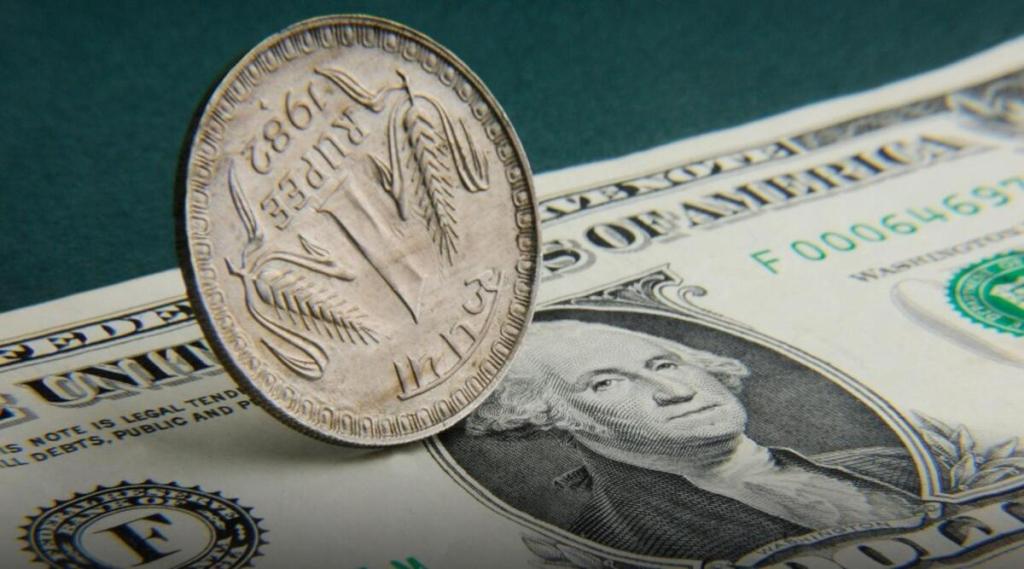The Indian rupee snapped its three-day losing streak to close 5 paise higher against the US dollar on Friday amid expectation of better foreign investment inflows from the upcoming IPOs. However, the rebound in the rupee was restricted amid weakness in domestic equities. At the interbank foreign exchange market, the rupee opened at 75.12 against the US greenback, and witnessed an intra-day high of 74.88 and a low of 75.13 before finally settling at 75.04 against the American currency, up 5 paise over its last close of 75.09. In the last week, the domestic currency has depreciated 61 paise against the US dollar. Rupee is likely to depreciate on Monday amid a surge in crude oil prices and on hawkish statement from the US Fed, according to analysts.
Rupee likely to depreciate on elevated crude oil prices: ICICI Direct
“The US dollar traded 0.02% flat on Friday amid mixed economic data from the US. The PCE price index expanded at a 4.9% YoY in December, the highest rise since September 1983. However, disappointing personal spending data from US capped further upside in dollar. Rupee future maturing on February 25 appreciated by 0.10% despite elevated crude oil prices and higher FII outflows from domestic markets. The rupee is expected to depreciate today amid a surge in crude oil prices and on hawkish statement from US Fed. Meanwhile, investors will keep an eye on India’s Economic survey. US$INR (February) is expected to trade in a range of 75.10-75.60 for the day.”
Gaurang Somaiyaa, Forex & Bullion Analyst, Motilal Oswal Financial Services
“Rupee fell last week fell as FIIs continued to remain net sellers in the equity segment. Domestic equities were weighed down in the past few sessions and that too was negative for the rupee. Rupee fell sharply also after the Federal Reserve in its policy statement hinted towards a more hawkish stance thereby extending gains for the dollar against its major crosses. The Fed signaled it is likely to raise U.S. interest rates in March and reaffirmed plans to end its bond purchases that month before launching a significant reduction in its asset holdings.”
“Yields on longer-dated Treasury securities, sensitive to the Fed’s balance sheet policy, rose as Powell signaled that a decision would be made soon on when to start shrinking the central bank’s more than $8 trillion portfolio of U.S. government bonds and mortgage-backed securities. On Friday, the dollar continued to move higher despite the core PCE index in December growing 0.5% unchanged as compared to the previous month. This week, volatility could remain elevated ahead of the important employment number that will be released from the US. Also manufacturing PMI and services PMI number will be keenly watched. We expect the USDINR(Spot) pair to trade with a positive bias and quote in the range of 74.80 and 75.50.”
USDINR has tailwinds by way of oil prices inching towards $92: Kotak Securities
“USDINR is going to face some event risk by way of Union Budget tomorrow. Generally, Budget days have seen sharp two-way volatility in the past but there is little long-lasting impact. However, this time around the focus will be on tax amendment to smoothen the way for the inclusion of GOIsecs in the global bond indices and also a possible amendment to FEMA law to allow for FDI in LIC ahead of its IPO. Both these measures, if realized, can cause lumpy $ inflows and carry trade bets. Interestingly, even when FPIs have sold over $3.7 billion in cash equities, they have bought close to half a billion dollars in the cash bonds, possibly hoping for global bond index play. USDINR has a lot of tailwinds by way of oil prices inching towards $92, 7.5 years high, stronger US Dollar Index, and wobbly equity markets. However, thanks to robust corporate inflows and attractive real rates keeping carry interest alive, USDINR has not yet shown strong upward momentum.”
Kshitij Purohit, Lead Commodity & Currency at CapitalVia Global Research
“The rupee fell against the US dollar on Friday, as the Federal Reserve’s earlier this week warning for aggressive monetary policy tightening in the world’s largest economy propelled the dollar index to a seven-month high, exacerbating fears of capital outflows from Indian markets… Foreign institutional investors have reduced their holdings of domestic equities by more than Rs 20,000 crore so far in January, according to NSDL statistics, as the threat of increased interest rates in the United States has dimmed the appeal of assets in riskier emerging economies like India.”
“Technically, Following a drop from the highest levels since December 23 the previous day, the USD/INR seesaws around 75.00 during Monday’s Asian session. During the USD/INR decline past 74.80, the 50% Fibonacci retracement (Fibo.) of the September-December upside near to 74.75 becomes critical to watch, as a breach of which will lead the quote towards the 74.30 level. On the upside, the 75.38-75.40 zone may act as immediate resistance, with a breach pushing prices up to the 75.48-75.50 zone.”


